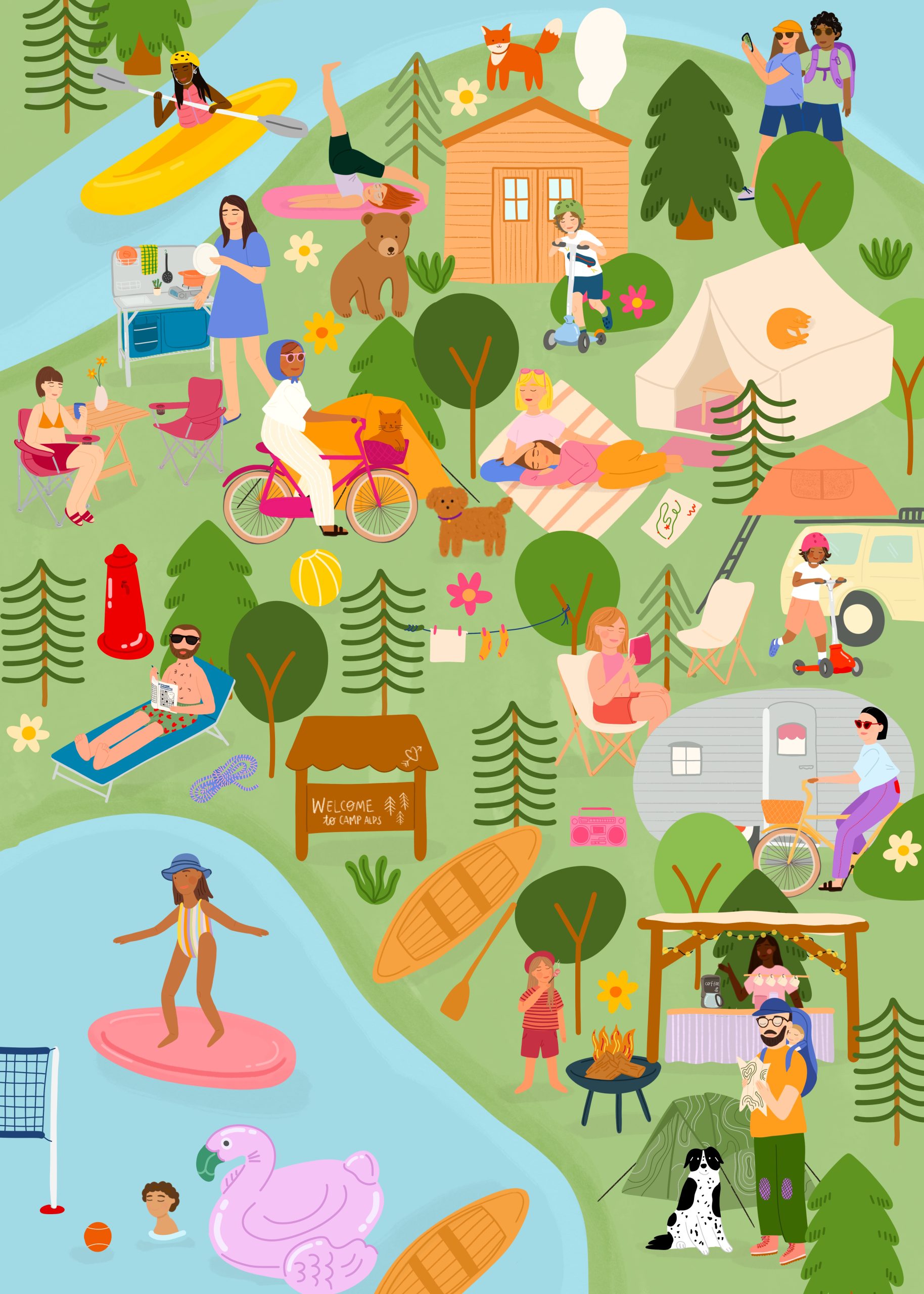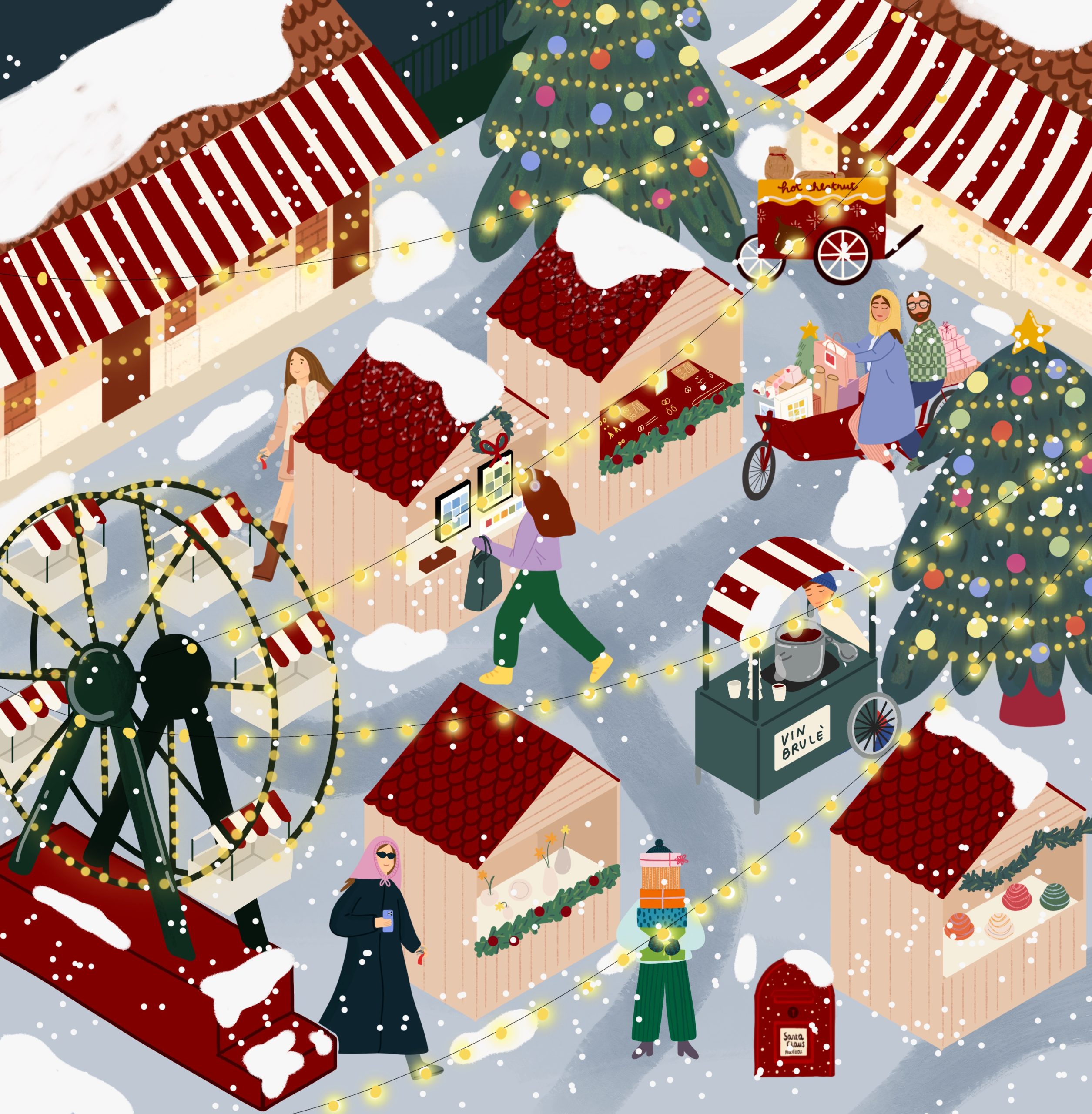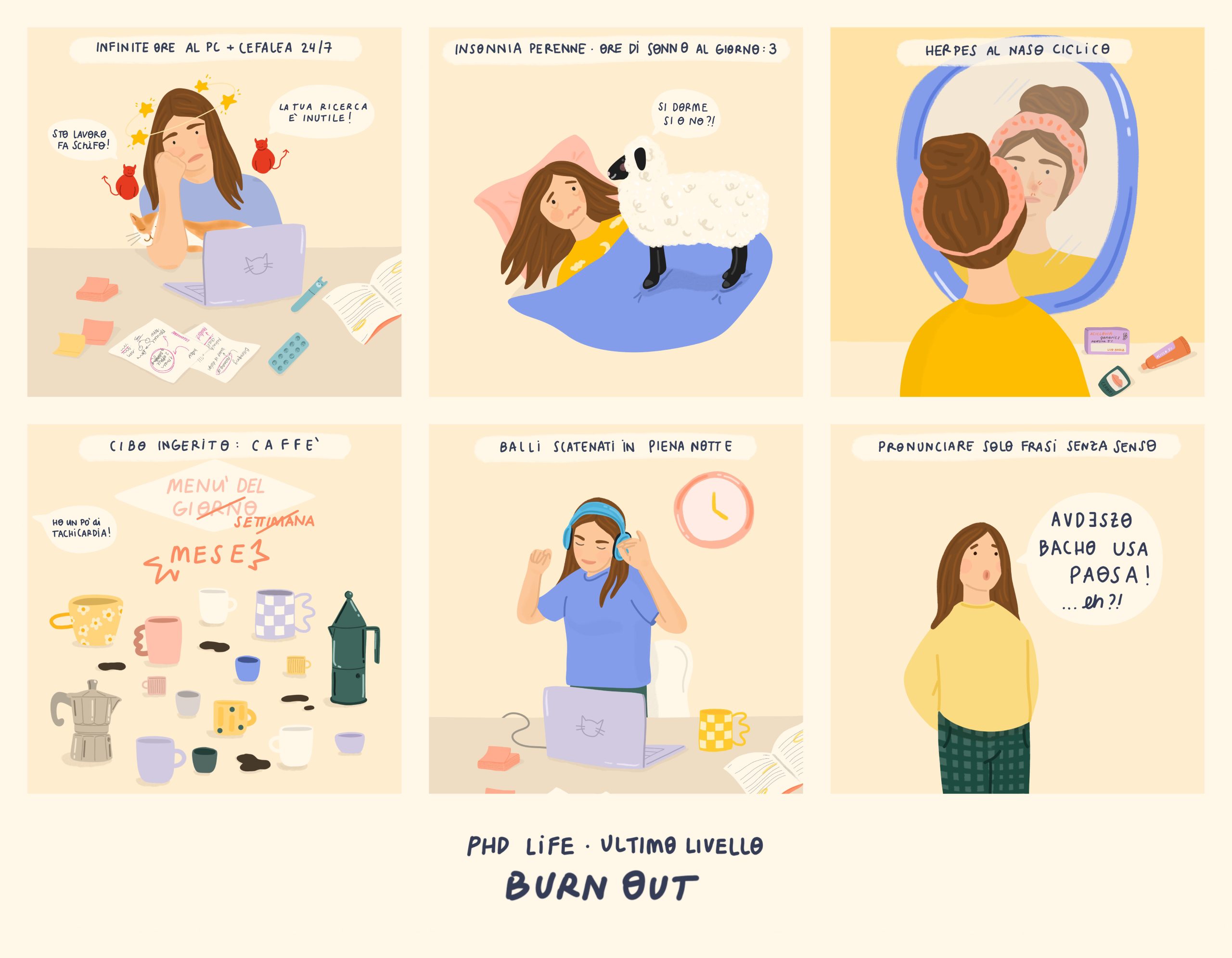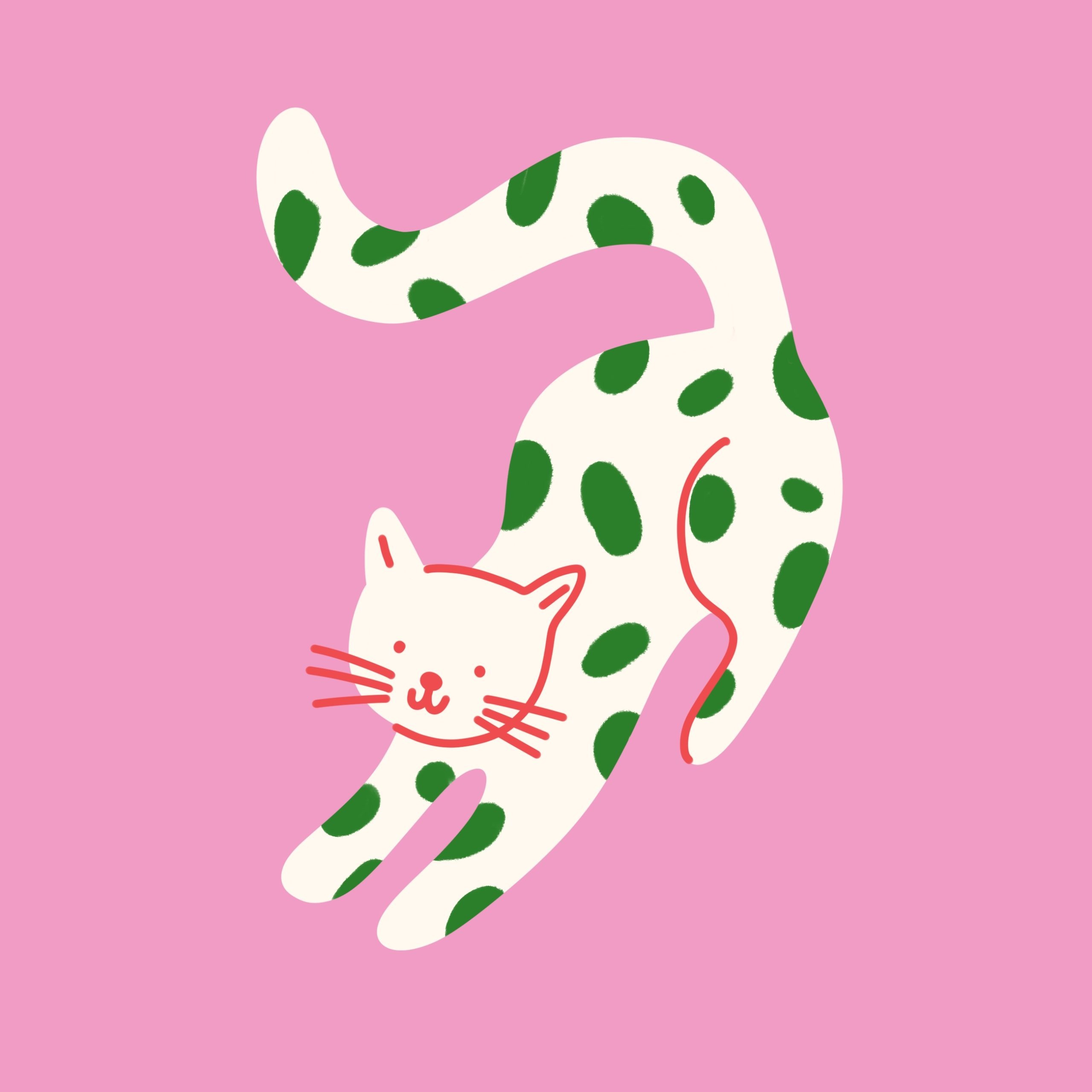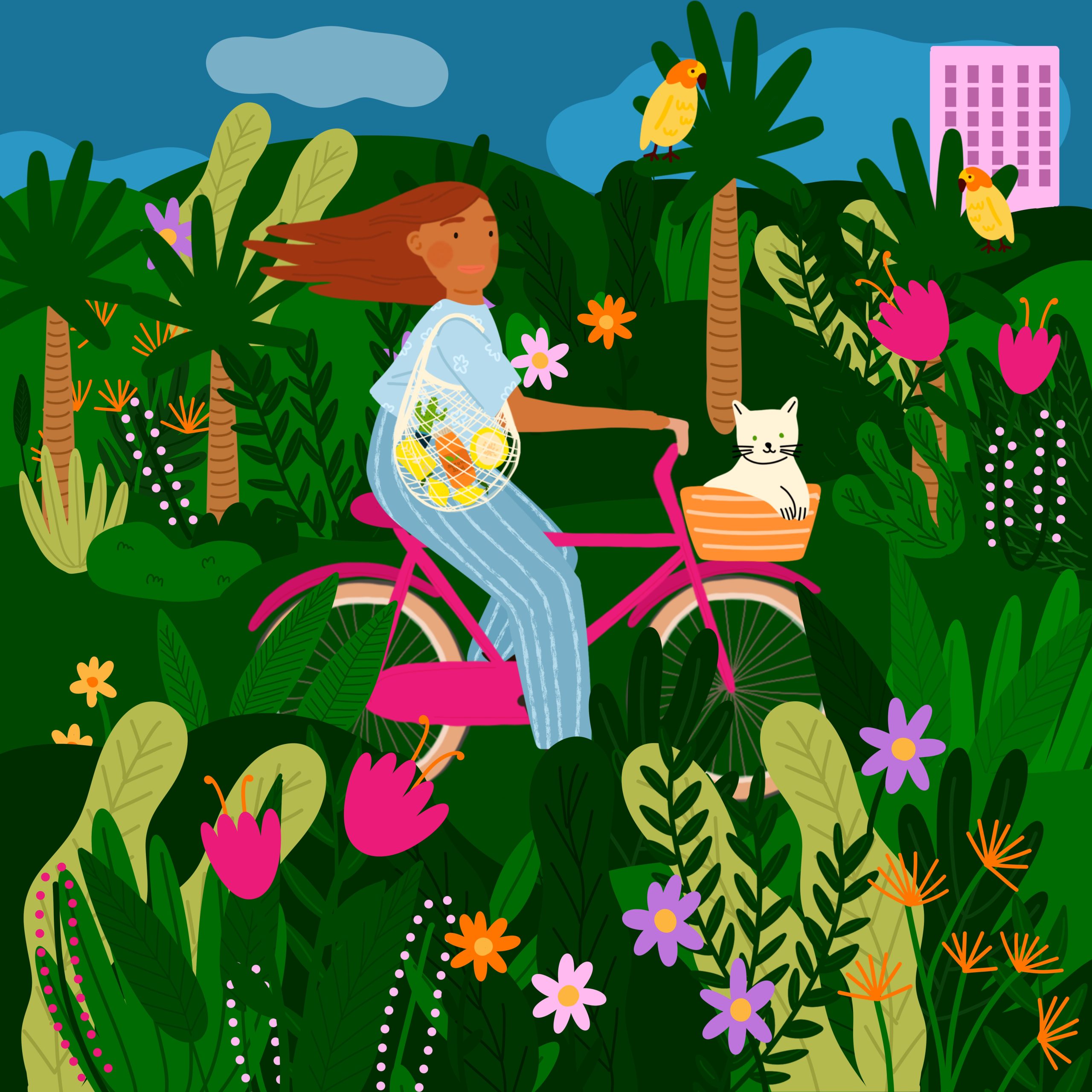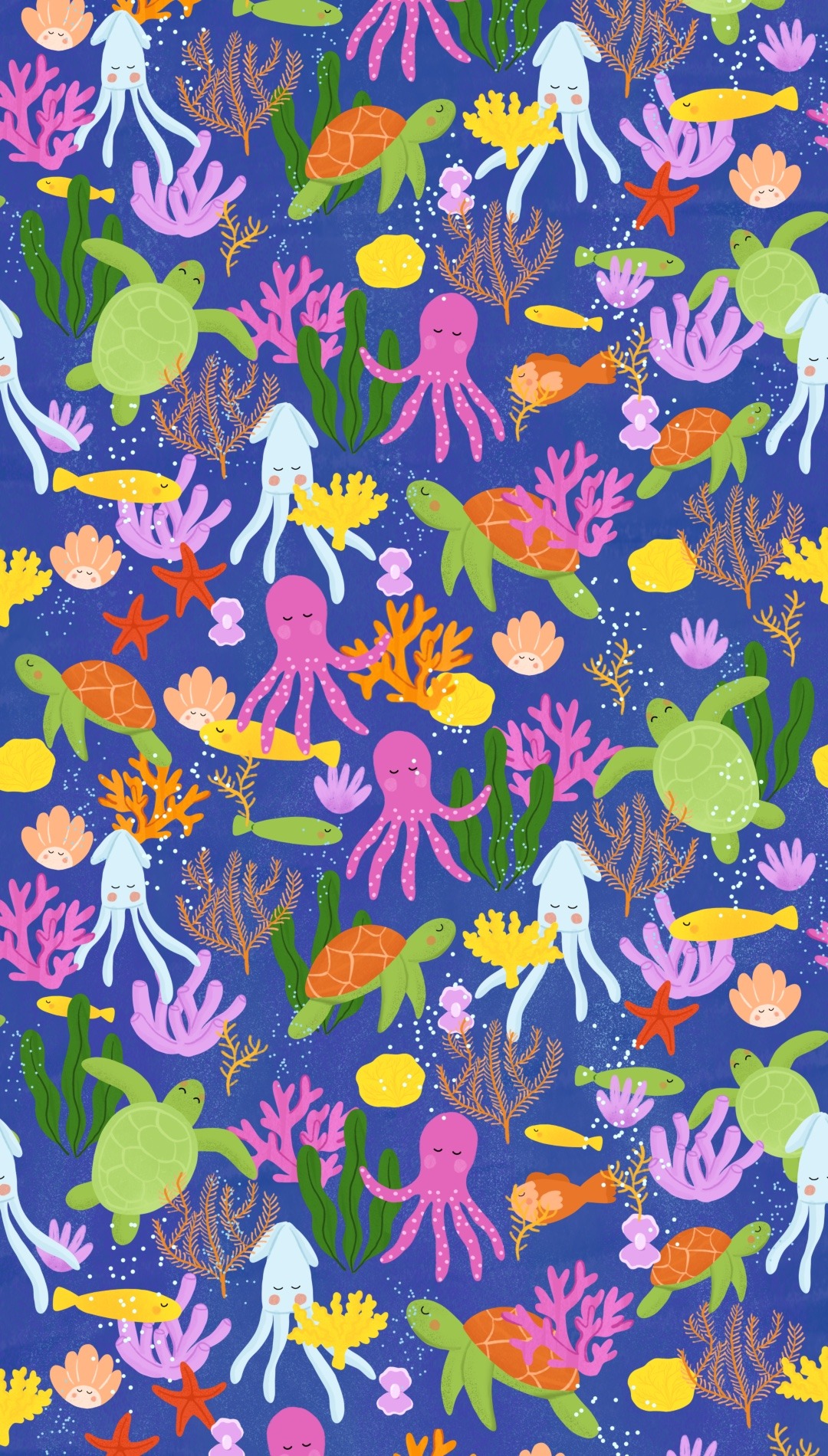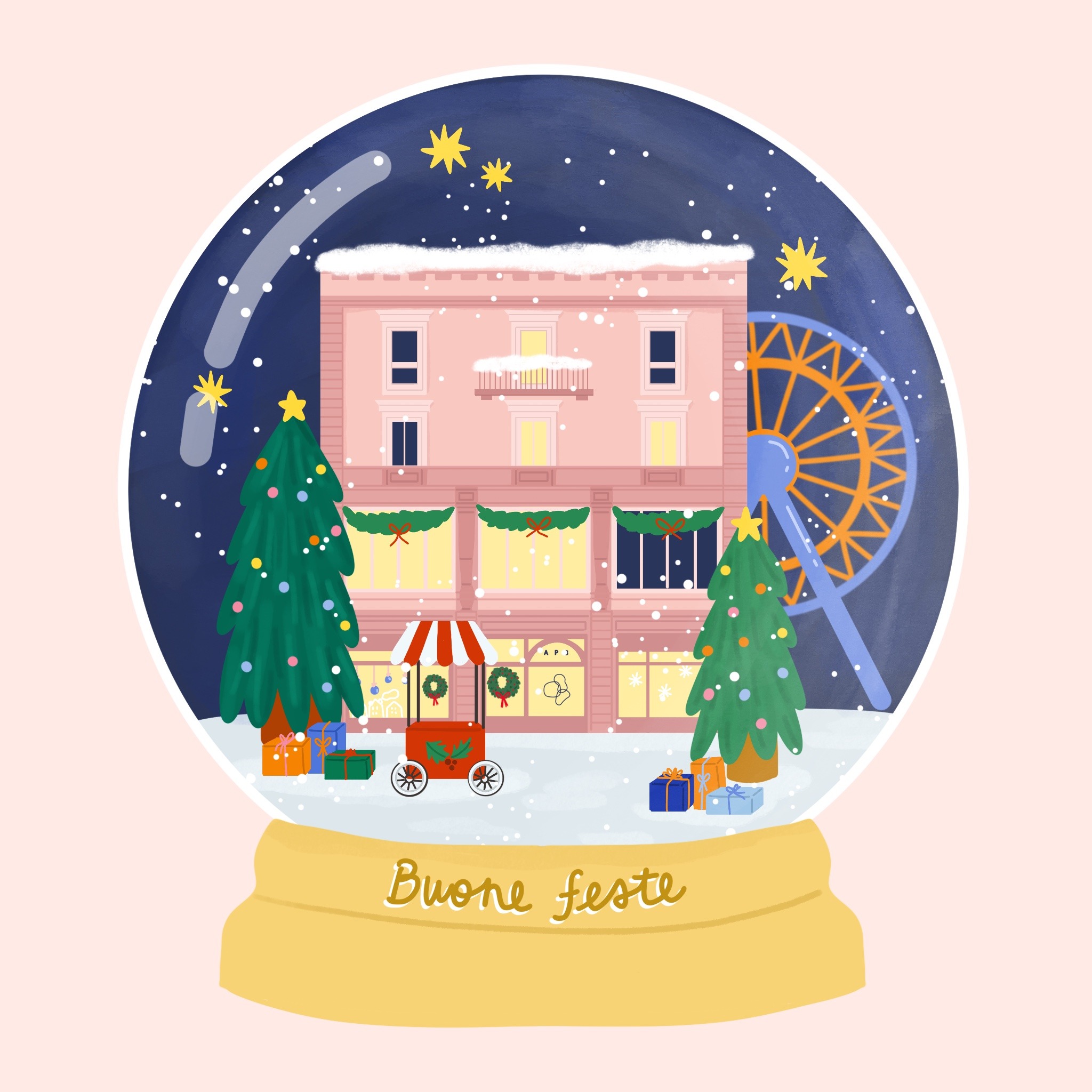Melania Vicentini

Melania, your degree in design from the Politecnico di Milano has given you a unique perspective in observing people and designing spaces that create social value. How does this educational foundation shape your approach to illustration? My background and experience in research have profoundly influenced my methodological approach, marked by comprehensive analysis, research, and observation. My process begins with a observation of the context, followed by a focus on individual needs and finding the most effective ways to address them. Driven by both an inherent need and a personal tendency, my insatiable curiosity and passion for knowledge continually propel me to thoroughly explore every subject. This depth is evident both when I dedicate myself to drawing and in my relationship with the client. Whenever I embark on a new illustration, I make it a priority to fully comprehend the context, even in areas where I’m not an expert. One of the phases I appreciate the most is the initial research, where I immerse myself completely in the topic, as this is where my inspiration is born. I am constantly on the lookout for obscure details to incorporate into my illustrations, elements that perhaps only the client and I will recognise. These nuances form an invisible, intimate connection, a hidden layer of understanding that I always strive to weave into my work. When working with a client, my listening ability and my methodical approach, derived from my research experience, help me to fully understand their needs and requests. Throughout my academic journey and beyond, I have consistently aimed to imbue each project with meaning and metaphor, instilling this concept of depth into every one of my illustrations, no matter how simple they may appear.
Could you elaborate on the reasoning behind your stylistic choices? How do you seek to capture
the essence of daily gestures and rituals in your works? To answer this question, I have to go back in time to when I started this project. My earliest illustrations were born during the pandemic, a time when joy was primarily found in the small, everyday moments. I depicted simple but meaningful actions: walks in the park, cuddles with cats, time with friends, reading a book… During a period when life felt increasingly burdensome, drawing became a means to preserve memories of travels and envision moments of lightheartedness, as well as everyday activities that were out of reach at the time. The time expressed by the images is calm, slow, almost suspended, in a period of global “pause”. My colourful illustrations, akin to confetti – tiny scraps of paper symbolising joy – aimed to represent these fleeting moments of daily happiness. I am convinced that true happiness lies in the small daily rituals, which is why this distinctive trait of mine has remained even after the pandemic, and in the following years, I continued to observe the situations around me. I like to observe and capture those small involuntary smiles we make throughout the day, those smiles we don’t even realise sometimes. Amidst the rush of modern life, I take a moment to pause and cherish these special instances, as if to reconnect with our immediate surroundings. This approach sometimes serves as a reminder of moments I might otherwise forget. I feel that people are increasingly becoming disconnected from their environment, caught up in the whirlwind of our lives and lost in a sense of timelessness. I find it important to reconnect with the everyday, to appreciate even the small moments again.
You have collaborated with companies in the beauty and wellness sector. How is your perspective as a designer manifested in these types of projects? I think that my ability to listen, analyse, and respond to needs has been fundamental to the success of these projects. I always strive to grasp the underlying intent behind each specific request, aiming to discern the true necessity at its core. This approach has been particularly crucial when tasked with creating illustrations for contexts unfamiliar to me. My analytical and creative skills have enabled me to produce captivating projects that steer clear of the mundane. The first phase of a project is always the analysis of the context, and this methodology is also reflected in illustration. Moreover, I value the concept of co-design and find that the techniques I’ve learned from this approach are immensely beneficial during client meetings, which often evolve into dynamic brainstorming sessions. This skill also allows me to assist clients in understanding and focusing their needs, because – it must be said – sometimes even they find it difficult to know exactly what they want. My approach as a designer is also helpful in this discovery phase.
Alongside your illustration work, you also engage in hands-on activities like bookbinding, painting, and ceramics. How do you find balance between digital art and these more tactile, physical forms of creation? I’ve always had a passion for drawing, painting, and particularly for crafting tangible objects: from moulding salt dough as a child to constructing scale models during my university years. This innate desire to create with my hands has intensified, especially since I’ve predominantly switched to digital drawing, the technique I prefer and find most suitable for my style of illustration. However, this shift towards digital has, in a way, felt limiting, prompting me to explore other modes of expression, which is how I came to take up bookbinding and ceramics. Bookbinding arose from the personal need to create notebooks starting from the collection of unfinished pages. I explored different techniques for sewing notebooks and discovered a world that fascinated me. The process of stitching pages is incredibly soothing, and I must admit, the idea of trying my hand at tailoring has crossed my mind too. As for ceramics, I realise I am an extremely demanding person: in my head, I know exactly what I want. This self-reliance is a deep-seated part of who I am, so I began crafting pots that matched the specific shapes and colours I envisioned. I cherish the ability to materialise things that exist only in my mind, which led me to also experiment with woodworking. I like that my ideas come to life, and the difficulties and obstacles are continuous stimuli that allow me to delve into a particular technique.
